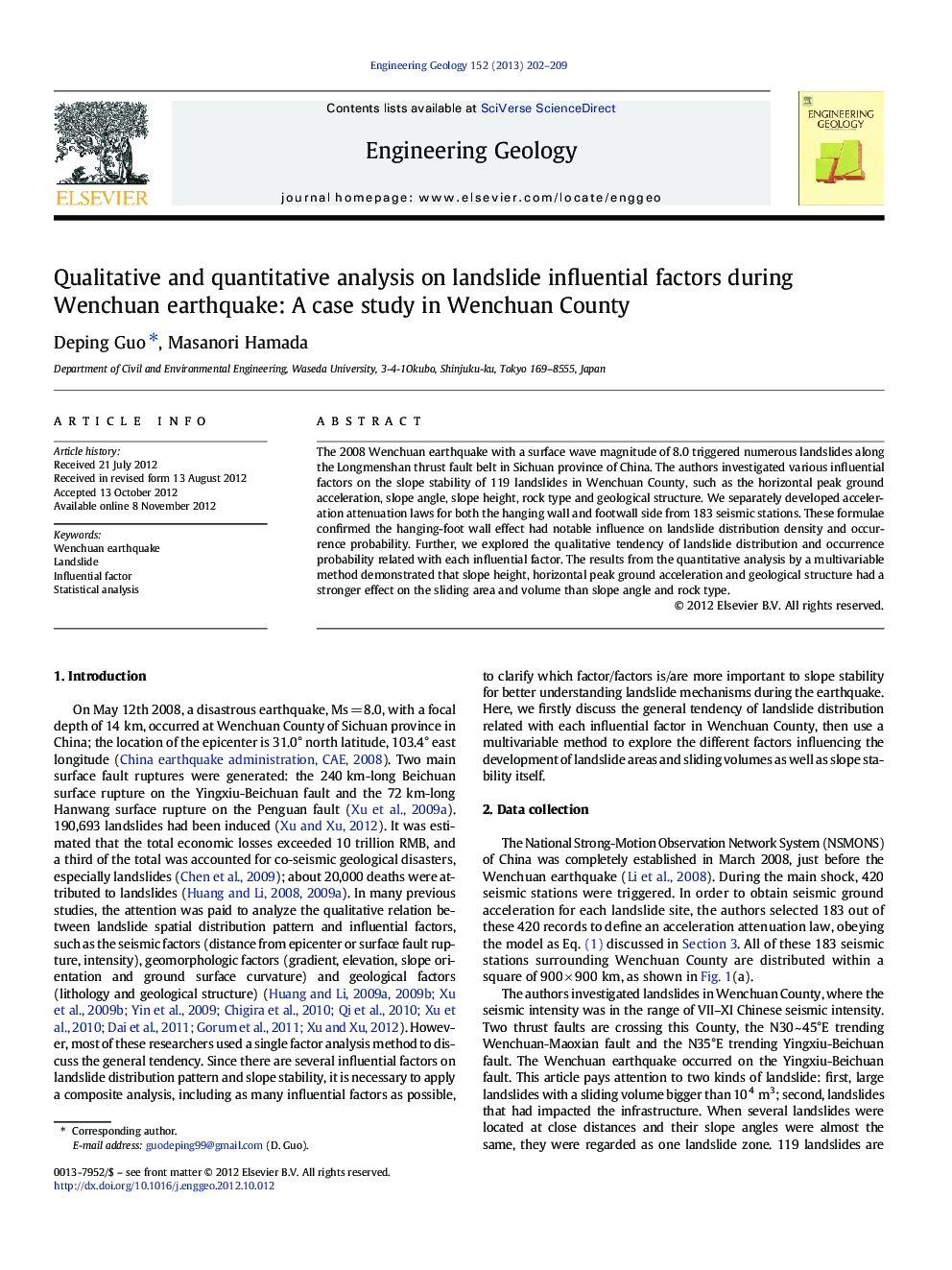| Article ID | Journal | Published Year | Pages | File Type |
|---|---|---|---|---|
| 4743875 | Engineering Geology | 2013 | 8 Pages |
The 2008 Wenchuan earthquake with a surface wave magnitude of 8.0 triggered numerous landslides along the Longmenshan thrust fault belt in Sichuan province of China. The authors investigated various influential factors on the slope stability of 119 landslides in Wenchuan County, such as the horizontal peak ground acceleration, slope angle, slope height, rock type and geological structure. We separately developed acceleration attenuation laws for both the hanging wall and footwall side from 183 seismic stations. These formulae confirmed the hanging-foot wall effect had notable influence on landslide distribution density and occurrence probability. Further, we explored the qualitative tendency of landslide distribution and occurrence probability related with each influential factor. The results from the quantitative analysis by a multivariable method demonstrated that slope height, horizontal peak ground acceleration and geological structure had a stronger effect on the sliding area and volume than slope angle and rock type.
► Ground motion difference caused hanging-foot wall effect. ► Qualitatively and quantitatively analyzing landslide influential factors. ► Predicted models of sliding area and sliding volume were established. ► Slope height, PGA and geological structure are the key factors on landslide scale.
